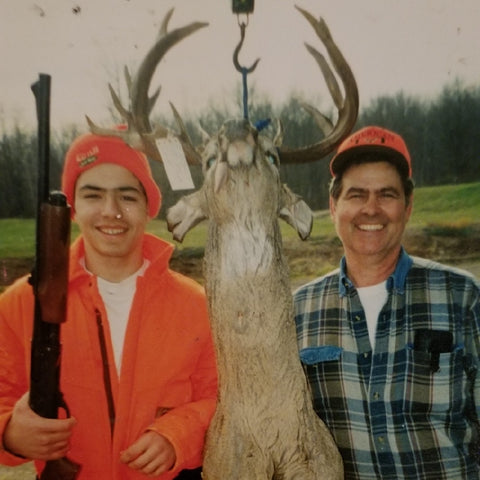How to Get Better Daytime Trail Camera Photos
Everyone loves awesome day time photos! They are almost like a trophy of some sorts. They go bonkers on social media and outside of giant bucks they are usually the first photo shared with your buddy.
Ask any photographer about the basics and you’ll likely hear the phrase "control the light". When you’re using dslr or mirrorless camera is relatively easy because you have full manual control over the camera settings like shutter speed, gain, and aperture. With trail cameras, it's a different story. Trail cameras work off of auto exposure tables where the camera is computing the correct or the most closely applicable settings based off the light metering systems for that specific scenario. Sound complicated right? Well it is...To simplify all this, for every trail camera user, you can follow a few basic rules to increase daytime photo quality out of your trail cameras.
POINT YOUR CAMERAS NORTH

Personally, I don’t love this rule. In my mind, you have put the camera in the best location to do its job. However, as a general rule of thumb, pointing the camera north limits over exposure potential and eliminates sun glares. At least if you’re north of the equator. Take this pointer as more of a general rule of thumb and use it when applicable. This can also help with false trigger events throughout the summer months where the sun has a great effect on the monitored area.
AVOID HARSH LIGHTING CONDITIONS

Out of all the advice, tips, and tricks, this is the most important. Again, this revolves around those auto exposure tables previously mentioned. Avoid putting your camera in a heavily shaded area, monitoring an open area OR vise versa. A great example of this is putting your camera on a field edge underneath a shaded out tree. The trail camera light metering system is likely going to get a reading from the shaded area, but take a photo of the field which could cause blown out daytime photos. The same can happen on the flip side but the photos will come out darker than desired.
ANGLES AND FRAMING

Over the years, we’ve seen some really thought out trail camera sets. Sometimes it seems as though folks are more worried about getting that perfect picture from a photography standpoint vs gathering data for deer hunting. There’s absolutely nothing wrong with that if that’s the goal. With that goal in mind, playing with angles and framing can elevate your daytime photo quality to the next level. Remember the rule of thirds. This concept is around breaking down the photo into thirds and capturing the subject in a single third leaving 2/3 of the frame open. You can take that a step further and add depth to the photo with open sky horizons, backgrounds, and foregrounds. It’s tough to do when dealing with wild animals but when it comes together the photos can be amazing.
Using leading lines to focus the viewers attention to a specific area is also another framing concept. An example of this would be utilizing a fence line in the photo where the fence line would be running perpendicular in the frame leading to a feeder, mineral site, scrap or even a rubbing post.
Experimenting with mounting height and angles can also add a wow factor to your daytime trail camera photos. While there is no general rule to follow, a lot of folks get creative with mounting there cameras low and aimed upward around a static environment. This type of trail camera set will often product close up shots with unique angles.
LIGHT METER MANIPULATION
This is really next level. Understanding the concept of a trail camera’s light metering system allows people to really get creative. If you’ve ever seen a golden hour shot of a whitetail where there’s a perfect sunset with a dark whitetail silhouette you’re witnessing greatness. The idea here is the exact opposite of avoiding harsh lighting, you are actually fooling the camera to use lighting contrast for a very specific image. Like I said, it’s some next level stuff. Most people won’t ever attempt to do but once you understand the concept and execute you may just find yourself dedicating some trail cameras for that perfect manipulated shot.
WATER

Setting cameras around water can offer some really intriguing trail camera photos. There's a couple different approaches here. One being, using some type of mount to get your camera close to the water level. There's obvious risk here with any rain event so we don't recommend it unless it's in an easily accessible area. Lots of folks do this to capture water fowl images. The other approach is the exact opposite, mounting your camera in an elevated set and angling it down to the specific area you want to monitor. This type of setup can offer some really cool images where the subject actually has a reflection on a calm still water day.
When push comes to shove put the camera where it needs to be to do its job efficiently. However, if you find yourself wanting more out of the photo quality take these tips and put them to work. While better cameras will take better images, you might be surprised how much the setup has to do with the photo quality outcome.
Author: Chad Sylvester, Exodus Co-Founder/Owner





